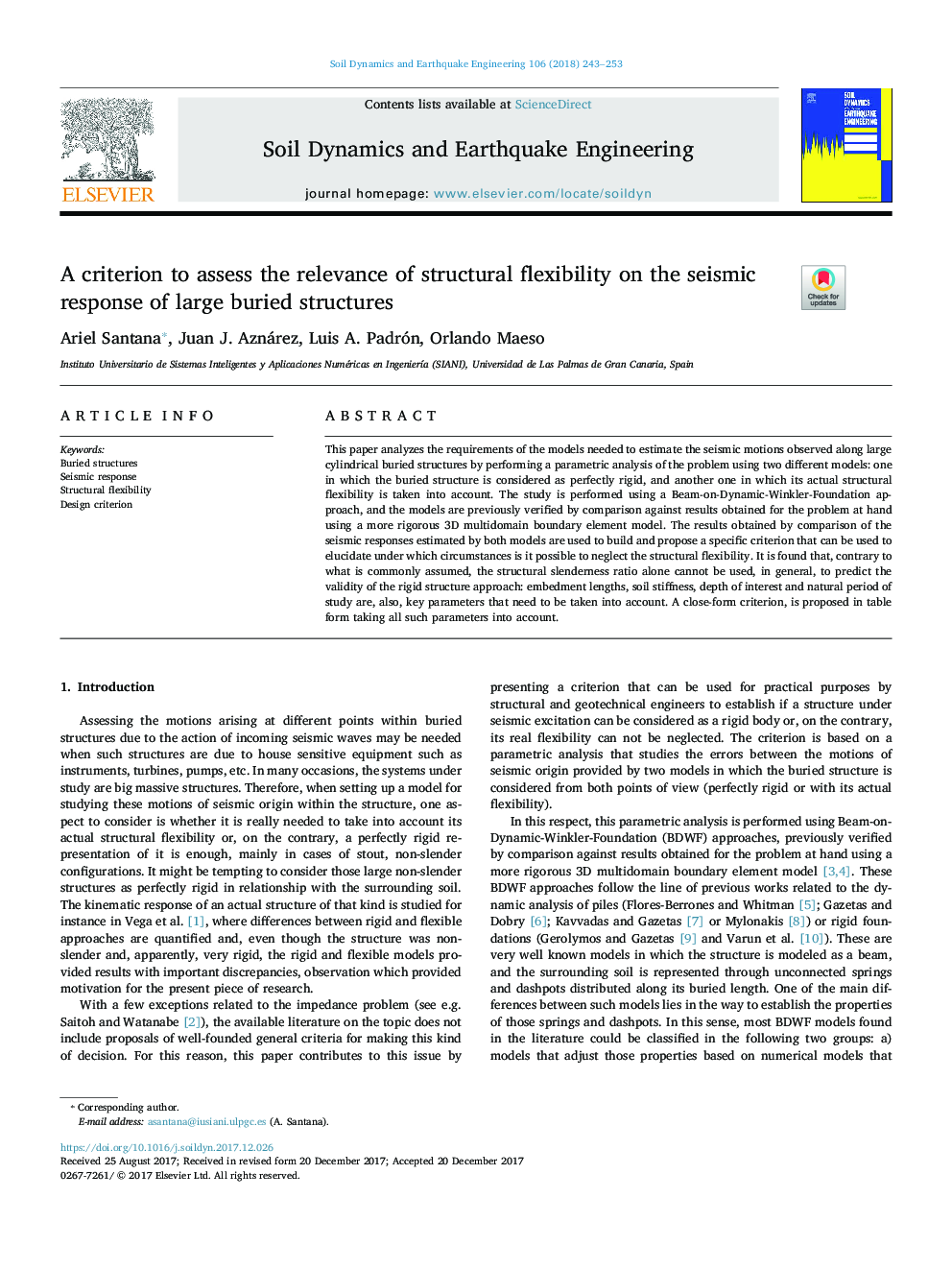| Article ID | Journal | Published Year | Pages | File Type |
|---|---|---|---|---|
| 6770938 | Soil Dynamics and Earthquake Engineering | 2018 | 11 Pages |
Abstract
This paper analyzes the requirements of the models needed to estimate the seismic motions observed along large cylindrical buried structures by performing a parametric analysis of the problem using two different models: one in which the buried structure is considered as perfectly rigid, and another one in which its actual structural flexibility is taken into account. The study is performed using a Beam-on-Dynamic-Winkler-Foundation approach, and the models are previously verified by comparison against results obtained for the problem at hand using a more rigorous 3D multidomain boundary element model. The results obtained by comparison of the seismic responses estimated by both models are used to build and propose a specific criterion that can be used to elucidate under which circumstances is it possible to neglect the structural flexibility. It is found that, contrary to what is commonly assumed, the structural slenderness ratio alone cannot be used, in general, to predict the validity of the rigid structure approach: embedment lengths, soil stiffness, depth of interest and natural period of study are, also, key parameters that need to be taken into account. A close-form criterion, is proposed in table form taking all such parameters into account.
Related Topics
Physical Sciences and Engineering
Earth and Planetary Sciences
Geotechnical Engineering and Engineering Geology
Authors
Ariel Santana, Juan J. Aznárez, Luis A. Padrón, Orlando Maeso,
